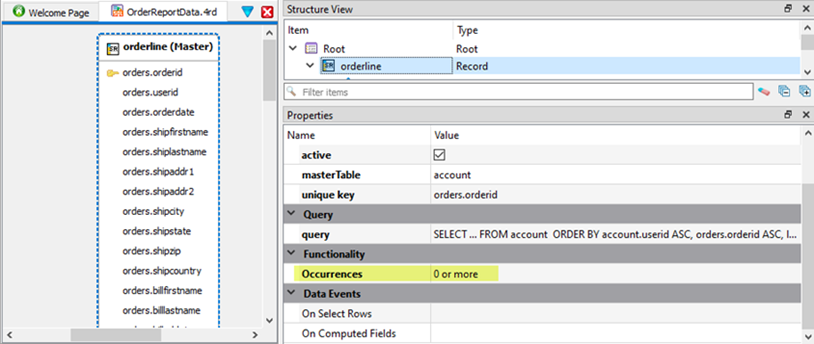Set occurrences for a record
You can define how many child records are printed for each master record.

| Option | Description |
|---|---|
| 1 |
The master record prints, and only the first fetched child record prints. All other child records are discarded. If no child rows are fetched, a child row still must print. By default, it will be an empty child record. You can add default
values for the row using an OnComputedFields code event. Select the
On Computed Fields property for
the creation of the event. In the code event function you
will need to test if the row has data. Test the primary key
for |
| 0 or 1 |
The master record prints, and only the first fetched child record prints. All other child records are discarded. If no child rows are fetched, nothing is printed for the child record. |
| 0 or more |
The master record prints, and all fetched child records print, whether it be one child record or many child records. If no child rows are fetched, nothing is printed for the child record. |
| 1 or more |
The master record prints, and all fetched child records print, whether it be one child record or many child records. If no child rows are fetched, a child row still must print. By default, it will be an empty child record. You can add default
values for the row using an OnComputedFields code event. Select the
On Computed Fields property for
the creation of the event. In the code event function you
will need to test if the row has data. Test the primary key
for |